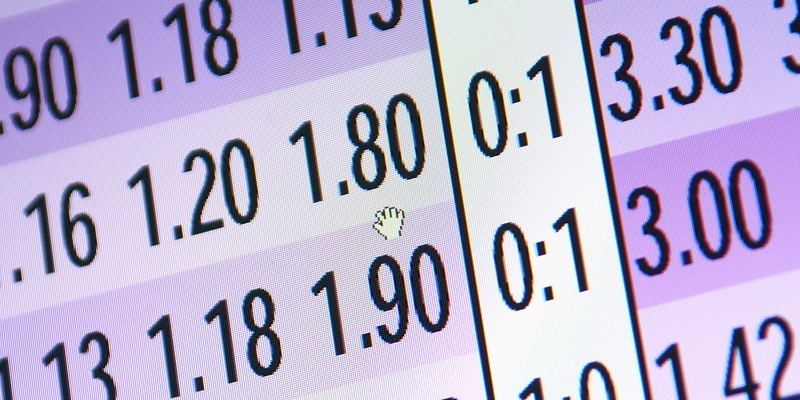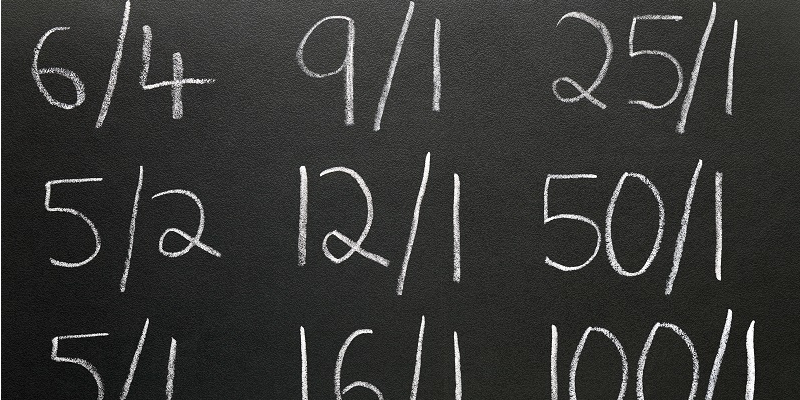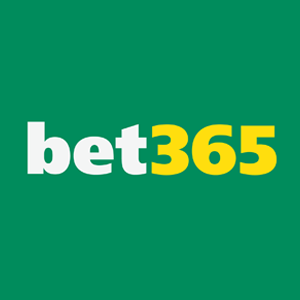How Do Betting Odds Work? Detailed Explanation & Example
If you plan to start entertaining at sportsbooks, it is crucial to understand the odds. Therefore, it would be silly not to clearly understand the main types of betting odds and how they work before embarking on a journey to find your fortune.
Currently, at bookies, there are many betting types, and among them, the three most popular are Decimal odds (Europe), American odds (money line), and Fractional odds (UK). In general, you may feel over when you first get acquainted with these types of odds, but they are not too different and do not have a difference in payouts. Let's dig deeper!
What are American, Decimal, and Fractional Odds?
Odds displayed in American, Decimal, or Fraction format are simply different ways of presenting the same thing, and there is no difference in payouts. These odds tell bettors how much money they can win when betting on that match.
Bookmakers can manipulate the odds to incentivize bettors to participate in a specific hand. The total probability will always pass 100% because the sportsbook takes a cut that is calculated directly into the odds.
American Odds Explained
In North America, the most common sports odds type is the American Odds (also known as Moneyline odds or US odds). It usually uses the "-" sign, which indicates how much you need to bet to win $100. Conversely, the "+" sign shows the winnings for every $100 bet
In either case, you will get your original bet back, in addition to the amount won. The difference between the odds for the favorites and the underdogs gets more significant as the favorites' probability increases. However, odds can be affected by more than events related to the outcome of the game or match.
Example: An NFL game between the Green Bay Packers and the Minnesota Vikings has the following Moneyline odds:
Packers: +270
Vikings: -140
The bookie gave the Packers odds of +270, indicating a lower probability of winning, and the punters needed to risk $100 on the Packers to earn the potential payout of $270. So that, if the Packers win, bettors will get a total payout of $370.
The Vikings team, listed as the favorite, has a supposedly higher probability of winning, then the punters will need to bet $140 to win $100. If the Vikings win, the gamblers win $100 with a total payout of $240.
Calculating Winnings With American Odds
Assuming you don't want to bet $100, you can still place a smaller set of stakes to get the most out of the experience.
With the example above, let’s calculate the odds with a $30 stake instead of $100. You can also use the formula below to calculate the potential winnings for any value you want to bet on.
If you put $30 in Vikings (-140), the equation would look like this:
140/100= 30x
Therefore, if you put $30 on Vikings, you will win $21.42, and your payout will be $51.42 (initial stake plus winnings).
Conversely, if you choose the underdogs - Packer (+270) team with a $30 stake, the equation would look like this:
100/270= 30x
Therefore, if you put $30 in Ottawa, you will win $81, and your total payout will be $111.
Calculating Implied Probability With American Odds
Usually, odds suggest a particular outcome in any given match, and implied probability refers to the prospect of that outcome.
To calculate the implied probability, you need to convert the odds to a percentage. It will help you determine if the estimated probability of the match differs from the bookmaker's, allowing you to adjust your bets accordingly.
However, it should be noted that all odds at a bookie include "juice" or "cut." You, therefore, need to factor that the implied probability of every conceivable outcome of a match will be over 100% (known as an overround). For that reason, you should remove the "juice" from the betting lines before calculating the odds.
Calculation formula:
Risk / Profit = Implied Probability
Decimal Odds Explained

Of the three types of odds, decimal odds are the easiest to make. This is the type of bet commonly used in Europe, but many bookmakers still default to American odds. However, punters can place options on any stake.
In general, the number of decimal odds represents the punter win for every $1 wagered. However, for decimal odds, the number means the total payout rather than the profit. In other words, players' bets have been included in decimals, making it easier to calculate the total payout.
Example: Suppose in an MLB game between the Atlanta Braves and the Tampa Bay Rays, the decimal odds are displayed as follows:
- Atlanta Braves: 2.10
- Tampa Bay Rays: 1.40
Calculate Winnings With Decimal Odds
Calculating the potential winnings for decimal odds is very easy. All you need to do is multiply the bet by the odds tied to the selected team. Then subtract the original bet from the payout to calculate the winnings. The calculation formula is as follows:
Winnings = (Wager x Decimal) - Initial stake
Following the example above, you can calculate your winnings as follows:
If a $60 bet is on the Atlanta Braves (2.10), the winnings will be:
- (60 x 2.10) - 60 = 66
Conversely, if a $60 bet is on the Tampa Bay Rays (1.40), the winnings will be:
- (60 x 1.40) - 60 = 24
Calculate Implied Probabilities With Decimal Odds
Calculating implied probabilities will help you determine if a bet is worth the risk.
Continuing with the example above, you can determine the implied probability using the formula:
1 / Decimal Odds
For Atlanta Braves (2.10) and Tampa Bay Rays (1.40) decimal odds:
- Atlanta Braves implied probability of winning is: 1/2.10 = 47.6%
- Tampa Bay Rays implied probability of winning is: 1 / 1.40 = 71.4%
In this case, the Tampa Bay Rays have a much higher probability of winning, so a safer bet.
Fractional Odds Explained

Fractional odds are usually written as "/" or "-" and are commonly used by some significant bookmakers on horse races, making them the most preferred odds globally.
E.g.: Let's say you want to bet on the Breeders' Cup Classic. You will see odd-looking numbers such as 7/3 or 1/3.
The number to the left (7) tells you times the bettor expected the relevant outcome to fail. While the number on the right (3) indicates how many times the result will be successful.
Calculate Winnings With Fractional Odds
Calculating the payout for fractional odds is relatively easy. First, multiply the bet by the numerator (top number), dividing the result by the denominator (bottom number).
Example: 7/3 or 1/3.
Example:
- If you bet $40 on 7/3 odds, the calculation would look like this: (40 x 7) / 3 = $93.33
- In contrast, if you bet $40 on 1/3 odds, the calculation goes like this: (40 x 1) / 3 = $13.33.
Calculate Implied Probabilities With Fractional Odds
Finding the implied probabilities for fractional bets is not complicated. Continuing with the same odds as the example above, if your chosen horse has odds of 7/3, meaning out of 10 races (7+3), your horse is expected to win 7 times.
Next, you divide the number of times that horse wins by the number of races on the list, and you get an implied probability of: 7/10 = 70%.
What is a Push?
While not related to the odds, we would still like to mention Push as it can directly affect your payout. Simply put, a push is a tie, and you won't be able to see Push on the money line when placing a bet. Therefore, you need to know in advance whether you can bet on an outcome, and it usually applies if you are betting with spread or a total bet.
If the Push takes place and is not wagered on, you will only get your money back, as it is not considered a win or not.
The point spread will usually add half a point to each number, so a push can't happen, but that's not always the case. Therefore, pay attention to the bets and all the possibilities of a push.
Example:
Dallas Cowboys +3 (-110)
Cleveland Browns -3 (-110)
If this NFL game ends 34-31 for the Browns, neither team will cover the spread and be considered a push. In this case, you get your bet back, and it's like nothing happened.
What is Malay Odds?
Malaysian Odds (Malay Odds) are most commonly encountered in the football betting markets. These odds are a way to determine the relationship between the stake and the potential profit on a given bet.
Example: English Premier League match between Chelsea and MU:
Chelsea: 0.93
MU: -0.98
Punters place a positive bet on Chelsea for $100. If bettors win, the winnings will be calculated: $100 x 0.92 + $100 (bet) = $193. If you lose, you will lose your entire $100.
Punters place a negative bet on MU for $100. If bettors lose, the amount will be calculated: $100 x (-0.98) = $98. In case of winning bets, bettors will win a full $100.
The odds are in units of 1.00, and the sportsbook will give positive and negative odds. Based on that, the house will calculate the bonus for punters:
Positive Odds ("+" or not shown) - Shows the winning amount. If it loses, the punters will lose the whole thing.
For example, if a team's odds of winning are +0.3, bettors will win 0.3 units for each unit bet.
Negative Odds (-) - Shows the amount lost, similar to positive bets. If won, then the punters will win the whole thing.
For example, if a team has Malay odds -0.5 and bets, one unit will return two units, plus the wager.
Calculate Winnings With Malay Odds
Similar to other types of odds, Malay odds wins, and losses are calculated as follows:
Positive Odds:
Bet x Positive Odds + Initial Bet
If you lose, you will lose all your money.
Negative OddsBet x Negative Odds
If you win, you will get money.
What are Indonesian Odds?
The Indonesian odds are similar to American odds as there are the same odds only divided by 100.
Example: Champions League match between Arsenal and Chelsea:
Arsenal is listed as the weaker team with Indonesia odds of 2.20, meaning for each unit bet, the gamblers will win 2.20 units. Thus, a $100 wager returns $220, meaning the punters are risking $100 to win $120 (risking 1 unit to win 1.2 units).
Similar to Malay odds, Indo Odds can be either positive or negative.
Positive Odds - Represents the underdog and has bigger payouts than negative odds. If the punters win, they make at least x2 of their bet.
Example: Indonesia odds 3.00 (or +3.00), bettors will win three units for each unit bet, plus the stake.
Negative Odds - Applied to events that are considered likely to happen. However, the number does not indicate how much bettors can win. Instead, it shows how much the punters need to bet to win a unit.
Example: Indonesia odds -1.40, punters will need to risk 1.40 units to win one.
Calculate Winnings With Indonesian Odds
Here are simple ways on how to calculate profit from positive and negative Indonesian odds.
Positive Odds: Odds x Bet
Example: Chelsea have Indonesia odds of +2.30 to beat MU in the English Premier League, and punters bet 10. Profit unit is: 2.30 x 10 = 25
Negative Odds: (-1/Odd) x Bet
Example: MU has Indonesia odds of -3.50 to beat Chelsea in the English Premier League, and punters bet ten units. The profit unit is: (-1/3.5) x 10 = 2.8. After that, plus the stake amount of 10 units, punters will get a total of 12.8.
What is Hong Kong Odds?
Hong Kong odds are usually the default setting on Asian bookies, although not so common elsewhere. These odds are similar to American odds and can be applied to almost all sports.
For starters, Hong Kong odds are a great choice as it has no negative values , and all values are above zero and expressed as decimals.
Hong Kong odds are divided into three categories:
- Low Odds < 1 - Used for favorites and winnings per unit bet will be less than one unit.
- Odds = 1 - Indicates even-money bets and bets with a payout of 1:1. So for each unit wagered, the punters win by one more unit.
- Odds >1 - Pays higher and is used for underdogs.
Calculate Winnings with Hong Kong Odds
Here is the Profit Formula:
Bet x Hong Kong Odds = Profit
Example: If you bet $100 with a Hong Kong odds of 0.3, the profit will be $30.
Calculating the total payout is also simple, add 1 to the odds value before multiplying it by the bet amount.
Example: Similar to the bet size and odds above, the punters will receive $130. Just apply the formula: (Odds + 1) x Bet = Payout.
Conclusion
I hope this article will help you in reading sportsbook odds. However, it should be noted that before embarking on the pursuit of fortune, build yourself a good strategy and knowledge as not all sports are created equal.
Once you've got the hang of it, you're ready to take part in tournaments at your favorite bookmakers. Good luck!













.png)
.jpg)





